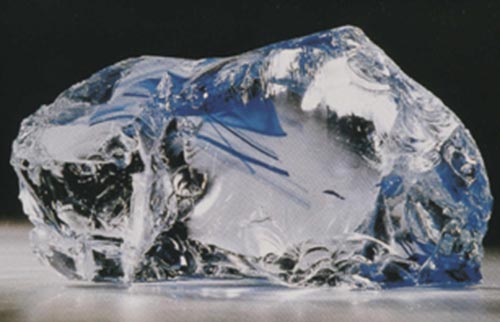How can the radioactivity of waste be managed?
The legitimate fears engendered by radioactive waste do not mean that there is no way of protecting ourselves against it. These fears are magnified by the fact that the danger is difficult to apprehend: except in cases of very high levels of irradiation, the consequences of individual exposure are dictated by chance; they are difficult to prove and can take years to appear. The insidious side of radiation – the part played by chance – and the long life of some radioelements help to make radioactive waste seem more of a threat than it actually is. Nevertheless, the living world has always had to deal with and has survived the presence of many natural poisons.

Trapping the radioactivity and wait
How contain radioactivity long enough for it not to come into contact with the environment? That is the issue with the most highly radioactive waste. One solution is to incorporate it into a glass matrix that is highly resistant to radiation and water damage. A block of glass like the one in the photograph could trap radioactive atoms for thousands of years, by the end of which the original radioactivity would have almost completely disappeared through natural decay. The host rock would then contain the remaining radioactivity.
© CEA
These fears sometimes make us forget that the multitude of methods available for protecting ourselves has been added to. Radioactive waste management is difficult because of the long life of some elements, but it is not fundamentally different from the management of other industrial waste and is probably more advanced. Engineers have more than one string to their bow! Effective techniques do exist for protecting us from radioelements. The main ones are simple: letting time do its work, containing the radioactivity, putting it out of reach, and where possible reducing it.
The great law of radioactivity is that it decreases naturally. Letting time do its work is fine when the decay process is quick. After ten or so half-lives the activity of a radioactive element is reduced by a factor of 1000. It has practically vanished.
the activity of a radioactive element is reduced by a factor of 1000. It has practically vanished.
But waiting is not enough when the decay process is slow and the amount of activity is very high. In that case, containment, storage and disposal become the watchwords. To avoid dispersal, a large number of barriers are placed between the radioactivity and the environment. The most radioactive material is immobilised by containing it within materials such as glass or ceramics designed to withstand radiation for thousands of years.
A few metres of water or earth are enough to stop the most penetrating radiation. But decay releases heat, and large amounts of heat can be released at the start of the process. In this case, the waste packages are put into storage to allow them to cool down. Storage is reversible in that it offers the possibility of retrieving the waste and taking advantage of technological progress.
Once cooled, the final destination of the packages could be a deep repository in a host rock chosen because it is away from water, hundreds or, as in a recent American proposal, thousands of metres down. In all cases the environment of the host rock is the dominant factor. Because of the barriers, the probability of a radioactive atom making its way up from these depths is extremely low.
Finally some stubborn nuclei take a long time to disappear, but there is another solution which is to convert them to stable or short-lived nuclei, giving nature a helping hand. This is known as transmutation It is an inefficient, difficult method that means sending the waste back into the reactor. First the radioactive elements have to be separated out. Separation is also useful for adapting the conditioning of the waste to the type of elements it contains.
Articles on the subject « Waste strategies »
Oklo : a natural reactor
Nature at work over the last two billion years It was noticed by chance in the 1970s that a urani[...]
Diluting radioactivity
A practice for elements with low levels of toxicity Management of radioactive waste generally foc[...]
Putting it out of reach
Containment and burial when it is not enough to wait Letting time do its work is not sufficient o[...]
Conditioning
Packages for trapping radioactivity… Conditioning means containing the radioactivity and im[...]
Temporary storages …
Storing: a useful but temporary solution Storing means tidying an object away with the intention [...]
Deep geological disposal
Ground-level and deep disposal: a definitive solution Deep disposal of the most radioactive waste[...]
Separating and sorting
Sorting radioactive waste has advantages As with household waste, sorting can prove really useful[...]
Destroy (transmutation)
Transforming radioactive nuclei to make them less troublesome… The incineration of househol[...]
What to transmute?
Transmuting long-lived actinides and fission products Long-lived elements: actinides and fission [...]
Transmuting actinides
Attractive in principle, difficult in practice Destroying actinides using fission reactions is at[...]